Here’s my random ordered list of 18 projects which are expected to make it in Blender next year. Nearly all of these already started already – but some are still in the design and ideas phase. Most of the projects are being worked on supported by the Blender Foundation Development Fund or by Blender Institute – thanks to Blender Cloud subscribers and open movie supporters.
It’s an impressive list, I can’t wait for all of this in 2015 to happen! Please keep in mind that – as for any end-of-year listing – it’s subjective and personal overview. I’m sure there are developers out there who have great surprises up their sleeves for us.
On behalf of everyone at blender.org I wish you a happy new year!
Ton Roosendaal – Amsterdam, 31-12-2014
 Dependency Graph
Dependency Graph
There’s no doubt about the importance of this project, yet it’s a difficult one to present or promote.
Just think of it like this: the “Depsgraph” is the core Animation Engine of Blender, the engine that ensures all the updates work, reliably, threaded, linkable, massively similated or in other ways we predict artists will (ab)use Blender animation for the rest of the decade – without running into too much troubles!
Working on it: Sergey Sharybin, Joshua Leung
Likely to happen in 2015: 100%
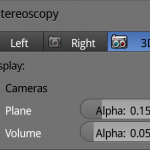 Multi View
Multi View
The real hype for stereo (multi-view) film is over now. But there’s no doubt that stereo-3D film has proven to be of sufficient added value to stay around for a while.
Getting this feature work meant to work on the viewport, UI drawing, imaging systems, movie/IO, render engines, compositor and sequence editor. A huge job that has completed now and will get merged in 2.74.
Working on it: Dalai Felinto
Likely to happen in 2015: 100%
OpenSubdiv
OpenSubdiv is a library that enables GPU generating and drawing of Subdivision Surfaces. The Blender branch with OpenSubdiv was ready for release last summer – but for performance reasons we decided to wait for the new OpenSubdiv release by Pixar. The release was set to Q4 of 2014, but will likely be Q1 or Q2 2015 then.
Working on it: Sergey Sharybin
Likely to happen in 2015: 90%
 Alembic
Alembic
We currently use many different cache file formats for animation or physics in Blender. The Alembic library (by ILM/SPI) has been designed to replace all of that with a single compact compression format. And even more! It’s the most popular format in film and animation pipelines currently (hey Game Industry, wake up and support something similar!).
Working on it: Lukas Toenne
Likely to happen in 2015: 90% (for Blender caching)
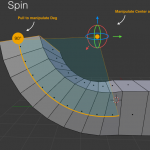 Custom manipulators
Custom manipulators
Blender suffers from an old disease – the Button Panelitis… which is a contagious plague all the bigger 3d software suites suffer from. Attempts to menufy, tabbify, iconify, and shortcuttify this has only helped to keep the disease within (nearly) acceptable limits. But there’s a cure too!
The real challenge is to rethink adding buttons/panelsl radically and to bring back UI to the viewports – and to the regions in a UI where you actually do your work.
In Blender we now test a (Python controlled) generic viewport widget system, which will first be tested and used for character rigs.
Working on it: Antony Ryakiotakis
Likely to happen in 2015: Still prototyping/designing
 Workflow
Workflow
As we all know, Blender’s screen estate gets too many buttons, everything gets too many options, and we can’t find keys for shortcuts anymore.
It’s time to admit that Blender has grown too large for a single configuration, that people are just too different, and that a good default just depends on a reference situation!
The solution is to go back to good old design efforts – creativity comes out of well defined restrictions, not out of unlimited choices. Exit: “default”, entrance: “Workflow”.
Working on it: Jonathan Williamson & the UI team, also related to Blender 101 code work.
Likely to happen in 2015: At least prototyping/designing
 Blender 101
Blender 101
The “Blender 2.5 project” took off in 2009. It was a massive success for Blender, giving us serious attention and involvement from the media industry.
There are still unfinished code jobs for 2.5 – mostly related to enable advanced configuration of editors and the whole UI (layouts, keymaps, etc). In Python!
As a proof-of-concept for completing this target, we’d like to see a “Blender 101” prototype released, which is a fully release-compatible Blender version configured for teaching 3D to high school students.
Working on it: Campbell Barton, Bastien Montagne
Prototype likely to happen in 2015: 90%
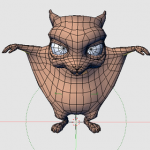 Mesh editing Tools
Mesh editing Tools
Innovations in Mesh editing keep happening in many ways – for Blender this was even taking off surprisingly using the Python API and by releasing add-ons.
When it comes to efficient modeling, for example for painting tools, sculpting, retopo and UV unwrapping – we still have enough work to do in Blender. Campbell Barton – the lead coder of the Mesh module – will reserve many months next year to work on Mesh tools.
Working on it: Campbell Barton
Likely to happen in 2015: 100% surprise
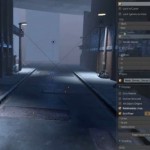 Viewport
Viewport
Blender has been using OpenGL since the beginning, almost 20 years ago. The viewport – as we currently have still – was designed keeping the OpenGL 1.0 spec in mind. It’s really time to upgrade that!
This work is for the larger part very technical – adding APIs, redesigning core functions for drawing. For that reason it took a while to see the real benefits.
Feasible for 2015 is to get a shader-based viewport that can be configured to align with the Workflow project – to ensure that Sculpters, Modelers, Animators, Compositors, Game designers, etc… that they all have their own preferred and useful view on the 3d world.
Shaders can be manually edited glsl scripts, but we should be making a decent Node editor for it as well.
Working on it: Jason Wilkins and Antony Ryakiotakis
Likely to happen in 2015: 95%
 Hair and particles
Hair and particles
The Gooseberry open movie project requires sophisticard control of hair and fur in animated characters. We’re still working on fixing and updating the old system, by replacing parts of this by newer code that’s more in control.
New is having much better control over physics simulation of hair, including proper collisions using Bullet. There will be a better hair edit mode and hair keyframing as well.
Ideally this was all meant to become a node system. For that, the outcome is still uncertain at this moment.
Working on it: Lukas Toenne
Likely to happen in 2015: 100% for working sims, 50% for nodes
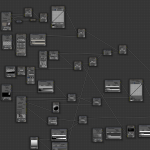 Everything Nodes
Everything Nodes
So while we’re on Particle nodes anyway – we should check on having Modifier-Nodes, Constraint-Nodes, Transform-nodes, Generative modeling Nodes, and so on.
And – why not then try to unify it into one system? Here a lot of experimenting and design work is needed still. It’s surprising and inspiring to see how well Python scripters manage to do this (partially) already.
Working on it: Lukas Toenne, Campbell Barton, …
Likely to happen in 2015: Unknown.
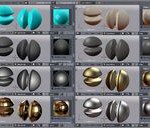 Asset browsing
Asset browsing
Blender already allows to make complicated shots with a lot of linking in of data from other .blend files. It’s quite abstract and basic still though.
What we need is to expose this functionality much better to the user, including adding tools and new paradigms to manage this well.
An editor is going to be made to manage all of this linking, re-using, appending, allowing revisions or ‘level of detail’ versions and to manage preset assets and asset libraries in general.
Working on it: Bastien Montagne
Likely to happen in 2015: 98%
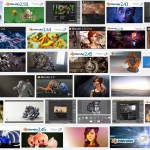 Blender Asset Manager + Cloud
Blender Asset Manager + Cloud
With an asset browser working on the Blender side, we also need to have something working on server side – either intranet or via internet.
For this we have the Blender Cloud website running now – which is meant to be the Gooseberry Open Movie’s production platform as well – making it a true open production system.
Currently work is completed on efficient checkouts of parts of a film svn (a shot for render farm, or a job for animator). Logging progress and reviewing is a short term target as well.
Working on it: Francesco Siddi, Campbell Barton, …
Likely to happen in 2015: 100% (we need it ourselves)
 PTex support
PTex support
PTex is a Disney library to support image-textures on Meshes without a need for unwrapping in a UV space first. It’s a massive workflow optimizer, but yet has to be verified that we can make it work for us.
Work will be done on editing (painting, baking) and rendering (in Cycles).
Working on it: Nicholas Bishop
Likely to happen in 2015: 90%
 Compositor Canvas
Compositor Canvas
Blender’s compositor recode project is still in progress – work is being done on better memory consumption and to replace the last bad (non tiled, non threaded) nodes – which will make composites much more responsive.
Biggest project here would be to give the compositor “Canvas awareness” – to give the compositor an own 2D space in which inputs and outputs will get flexibly mapped.
Working on it: Nobody has it assigned yet
Likely to happen in 2015: 50%
 Cycles speedup
Cycles speedup
The Cycles render engine now has more or less the features we want (although baked rendering and ‘shadow catcher’ material is still high on the list).
To survive as a real production render system we have to find ways to get render times under control. Work can still be done on optimizing BVH, more efficient sampling, coherence, noise reduction.
We don’t expect miracles here though – in the end it comes down to the artist – and giving artists sufficient tools to construct an efficient pipeline for fast renders of shots.
Working on it: Sergey Sharybin, Thomas Dinges
Likely to happen in 2015: 100%
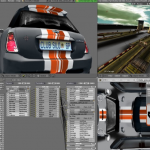 Game Engine – revisited
Game Engine – revisited
We don’t forget about BGE users and game modelers! They can expect a lot from the Viewport project – it should allow to model and texture using advanced shading and lighting models as currently common in Unreal and similar engines.
If that works, and our animation system is smooth and fast, and physics unified, then we only have one main target to upgrade: A decent logic editor and a way to have logic and playback work smoothly inside the animation system. (Check my proposal 18 months ago about the future of BGE).
Working on it: Not assigned yet
Likely to happen in 2015: 50%
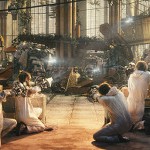 Motion tracking
Motion tracking
A couple of important updates are being scheduled for (video) motion tracking. This especially to get a decent automatic camera solving work – just one button press to get quick solves!
Working on it: Keir Mierle and Sergey Sharybin
Likely to happen in 2015: 90%